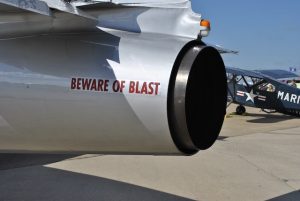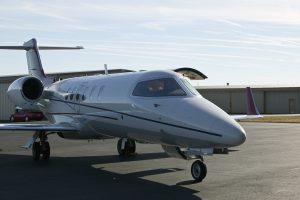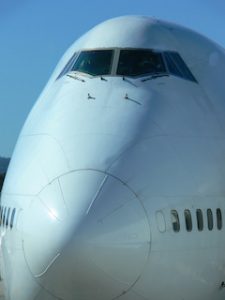How To Choose The Right Airplane Sim
 Choosing the right airplane sim can significantly enhance your flying experience, whether you’re a professional pilot, a student, or an aviation enthusiast. With the growing variety of airplane simulators available, each offering unique features and capabilities, making the right choice can be challenging. This comprehensive guide will walk you through the key factors to consider when selecting an airplane sim, ensuring that you find the best fit for your needs and preferences.
Choosing the right airplane sim can significantly enhance your flying experience, whether you’re a professional pilot, a student, or an aviation enthusiast. With the growing variety of airplane simulators available, each offering unique features and capabilities, making the right choice can be challenging. This comprehensive guide will walk you through the key factors to consider when selecting an airplane sim, ensuring that you find the best fit for your needs and preferences.
Understanding airplane sim
An airplane sim, or flight simulator, is a software or hardware system designed to replicate the experience of flying an aircraft. These simulators vary widely in complexity, from basic desktop applications to advanced full-motion systems with high-definition visuals and detailed aircraft models. They serve various purposes, including pilot training, aviation research, and personal enjoyment.
Before diving into the specifics of choosing an airplane sim, it’s essential to understand the different types available. These range from entry-level simulators suited for casual users to professional-grade systems used by flight schools and aviation organizations. Each type has distinct features and requirements, making it important to select one that aligns with your goals and budget.
Key factors to consider when choosing an airplane sim
1) Define your objectives
The first step in choosing the right airplane sim is to clearly define your objectives. Are you seeking a simulator for professional pilot training, personal recreation, or aviation research? Understanding your primary goals will help narrow down your options and ensure you select a simulator that meets your specific needs.
-
- Professional training: If you’re a pilot or a student in a flight school, you may require a simulator with high-fidelity flight dynamics, detailed aircraft models, and advanced training tools.
- Personal recreation: For casual users and aviation enthusiasts, a simulator that offers engaging gameplay, a variety of aircraft, and user-friendly controls might be sufficient.
- Aviation research: Researchers and developers may need a simulator with customisable features, extensive data tracking, and advanced modelling capabilities.
2) Evaluate flight dynamics and realism
The most critical aspect of an airplane sim is the accuracy of its flight dynamics. Flight dynamics refer to how realistically the simulator replicates the handling and behavior of an aircraft. High-quality simulators should provide a realistic experience, including accurate modeling of aerodynamics, control responses, and system interactions.
When evaluating flight dynamics, consider the following:
-
- Aerodynamic modelling: Look for simulators that offer realistic representations of lift, drag, thrust, and other aerodynamic forces.
- Control response: Ensure that the simulator accurately reflects how an aircraft responds to control inputs, such as steering, throttle adjustments, and autopilot settings.
- System interactions: A good simulator should faithfully reproduce the operation of various aircraft systems, including navigation, communication, and avionics.
3) Check the quality of aircraft models
Detailed and accurate aircraft models are essential for an immersive flying experience. High-quality simulators should offer a range of aircraft with realistic cockpit layouts, instrument panels, and operational systems. This level of detail allows users to become familiar with different aircraft and practice handling a variety of scenarios.
Consider the following when evaluating aircraft models:
-
- Cockpit detail: Look for simulators that provide intricate and functional cockpit designs, including authentic instrument placements and interactive controls.
- Aircraft variety: Choose a simulator that offers a diverse selection of aircraft, from general aviation planes to commercial airliners.
- Customisation options: Some simulators allow users to customise aircraft models, which can be beneficial for training specific procedures or exploring different configurations.
4) Assess visual and sensory realism
The visual and sensory aspects of an airplane sim play a significant role in creating an immersive experience. High-definition graphics, realistic environmental effects, and accurate sound design contribute to the overall realism of the simulation.
When assessing visual and sensory realism, consider the following features:
-
- Graphics quality: Look for simulators with high-resolution textures, detailed terrain, and realistic weather effects.
- Environmental simulation: A good simulator should accurately represent various weather conditions, including rain, fog, and turbulence.
- Sound effects: Realistic audio representations of aircraft systems, engine noises, and environmental sounds enhance the immersive experience.
5) Consider system requirements and compatibility
Before purchasing an airplane sim, ensure that your computer or hardware setup meets the system requirements for the software. High-quality simulators often require powerful processors, ample memory, and advanced graphics cards.
Key considerations include:
-
- Hardware specifications: Verify that your computer or gaming console meets or exceeds the recommended specifications for the simulator.
- Compatibility: Ensure that the simulator is compatible with your operating system and any additional hardware you plan to use, such as flight controllers or VR headsets.
- Future upgrades: Consider whether the simulator supports future updates or upgrades, allowing you to keep your system current with evolving technology.
6) Explore customisation and modding Support
Customization and modding support are valuable features for users who want to tailor their simulation experience. Many airplane sims offer options for modifying aircraft models, scenery, and controls, allowing users to create a personalized flying environment.
Features to look for include:
-
- Custom aircraft and scenery: Some simulators allow users to add custom aircraft models, airports, and scenery created by the community or third-party developers.
- Modding tools: Look for simulators that provide modding tools or support for community-created content, enhancing the versatility and longevity of the simulation.
- User community: A strong user community can offer valuable resources, including mods, tutorials, and troubleshooting advice.
7) Evaluate training and educational tools
For users seeking a simulator for professional training or educational purposes, the inclusion of training tools and educational resources is essential. These tools can help users learn and practice specific skills, track their progress, and receive feedback.
Key features to consider:
-
- Training scenarios: Look for simulators that offer predefined training scenarios, including emergency procedures, navigation exercises, and procedural drills.
- Performance tracking: Features that track your performance and provide feedback can help you identify areas for improvement and monitor your progress.
- Instructional materials: Access to instructional guides, tutorials, and online resources can enhance your learning experience and provide valuable insights.
8) Consider cost and value
The cost of an airplane sim can vary widely, depending on the features, complexity, and additional hardware required. Consider your budget and weigh the cost against the value and functionality offered by the simulator.
Factors to evaluate:
-
- Initial cost: Compare the price of the simulator with similar options to determine whether it fits within your budget.
- Additional expenses: Consider any additional costs for hardware, add-ons, or subscription services that may be required.
- Long-term value: Assess the long-term value of the simulator, including its ability to meet your evolving needs and the availability of updates or additional content.
9) Research reviews and recommendations
Before making a final decision, research reviews and recommendations from other users to gauge the performance and quality of the simulator. User reviews can provide valuable insights into the strengths and weaknesses of different options.
Key sources of information:
-
- Online reviews: Read reviews from reputable websites, forums, and online communities to gather opinions from experienced users.
- Professional recommendations: Seek recommendations from aviation professionals, flight schools, or industry experts who may have firsthand experience with various simulators.
- Demo versions: If available, try demo versions or trial periods to test the simulator’s features and compatibility before making a purchase.
Conclusion
Choosing the right airplane sim requires careful consideration of various factors, including your objectives, the quality of flight dynamics, the detail of aircraft models, and the realism of visuals and sensory effects. By evaluating these features and considering your specific needs and budget, you can select a simulator that provides an engaging and effective flying experience.
Whether you are a professional pilot, a student in flight training, or an aviation enthusiast seeking personal enjoyment, the right airplane sim can enhance your skills, knowledge, and overall experience. Embrace the best features of modern flight simulators and enjoy the exciting world of virtual aviation as you soar to new heights with cutting-edge technology and innovation.










